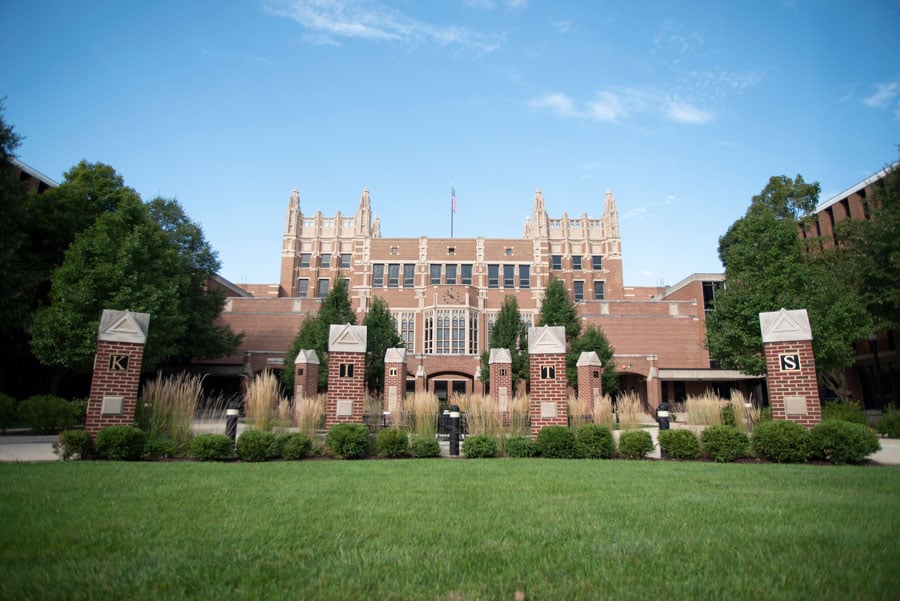ETHS report on student achievement shows continued racial disparities
Daily file photo by Colin Boyle
Evanston Township High School, 1600 Dodge Ave. ETHS board members discussed a student achievement report at a meeting Nov. 12.
November 18, 2019
A report on student achievement laid out continued racial disparities in student success, according to a Nov. 12 presentation to the Evanston Township High School District 202 school board.
The report looked at data from the ETHS graduating class of 2019 to see which students met the standards set in the Illinois Every Student Succeeds Act. The ESSA uses four indicators to determine college and career readiness: a grade point average of 2.8 or greater, a 95 percent attendance rate, at least one English/language arts academic indicator and at least one mathematics indicator.
For language arts, the state requires students to meet the requirements of one of four options: earn an A, B or C grade in an Advanced Placement English course; earn a 3 or higher on an AP exam; earn a reading and writing SAT score of 480 or higher; or earn an ACT English subject score of at least 18 or an ACT reading subject score of at least 22.
Pete Bavis, ETHS assistant superintendent of curriculum and instruction, said at the meeting that the issue with the English language arts indicator is that two of the four options are based on enrollment. In theory, ETHS could enroll all juniors in AP English to satisfy the benchmark, he said.
“That’s very cynical. We would never do that,” Bavis said. “However, that’s what that indicator really privileges.”
Carrie Levy, ETHS director of research, evaluation and assessment, said the report broke down the data by race to see which students met the benchmarks.
For the class of 2019, 65 percent of students overall achieved a grade point average of at least 2.8; the average attendance rate across all four years was 92 percent; 78 percent of students met the math proficiency standard; and 65 percent met the English proficiency standard.
But while white students had an average GPA of around 3.4, the average GPA for black female students was 2.6 and 2.3 for black male students. Latinx students also fell slightly below the 2.8 benchmark, with women averaging a 2.7 GPA and men averaging a 2.6 GPA. Students on free or reduced lunch had an average GPA of 2.5, and students with individualized education programs had an average GPA of 2.4.
Attendance rates were largely consistent across all groups, but disparities also emerged on math and English benchmarks. Around 90 percent of white students met both math and English language proficiency standards, while less than 50 percent of black students met the English benchmarks and less than 65 percent met the math benchmarks.
District 202 board member Jude Laude said he’s frustrated, but unsurprised by these disparities. While the district is spending a lot of time addressing equity issues, it’s still not enough, and there needs to be more action items to address the trends.
“Every time I see these numbers, I must be transparent about it,” Laude said. “It’s just so frustrating and sad that there are these disparities between the outcomes for our black and brown students and our white students.”
Email: samanthahandler2021@u.northwestern.edu
Twitter: @sn_handler



